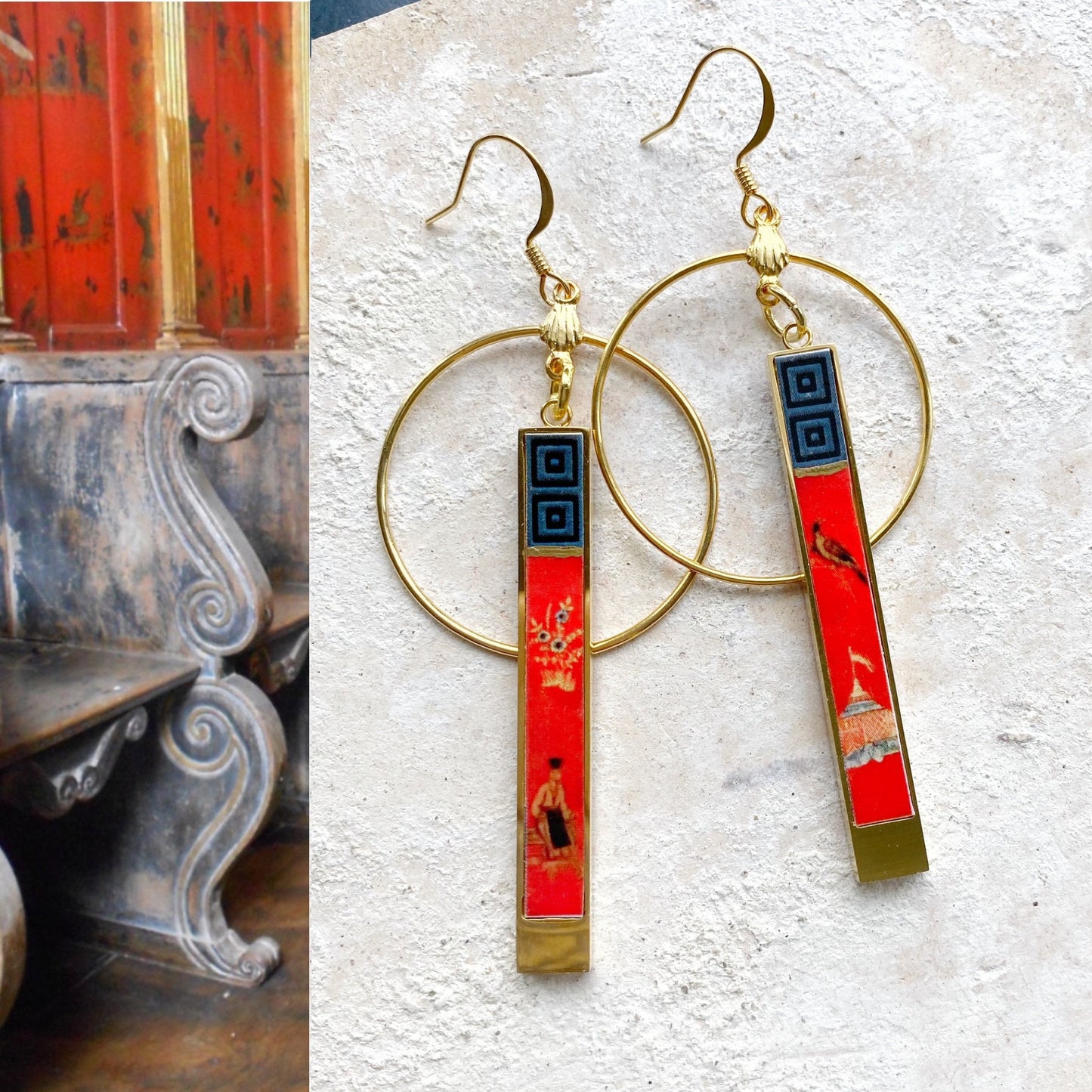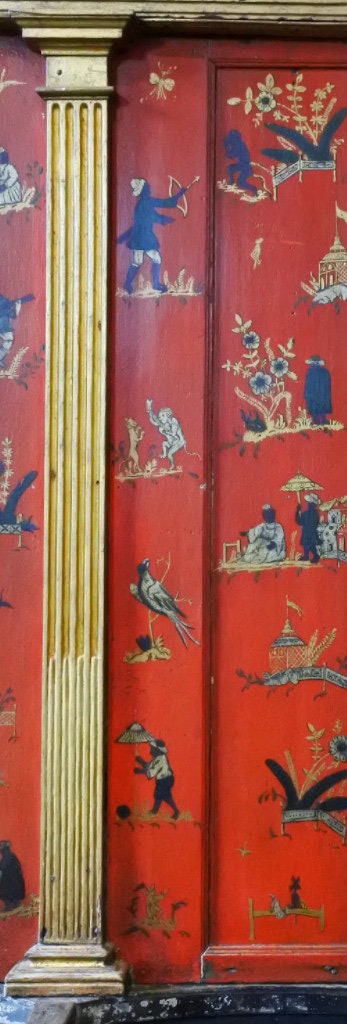Atrio Tiles
Earrings Atrio Chinoiserie Circle Bar Asian Red Frescoes Portugal Aveiro Convent Porcelain China Vintage Brass Hoops
Earrings Atrio Chinoiserie Circle Bar Asian Red Frescoes Portugal Aveiro Convent Porcelain China Vintage Brass Hoops
Couldn't load pickup availability
Use this link to find all of our Circle Bar Earrings https://www.etsy.com/shop/Atrio?section_id=29230698
The red frescoes are from the Upper Choir Stalls in the Convent where Princess Joana spent most of her life in Aveiro. The nuns were not allowed to come in contact with regular church attendees, so the "upper Choir stalls were a holy place" where the nuns met to attend mass and carry out their duties. These areas were richly decorated. The panels above the seats were "CHINOISERIE" panels depicting European and Asian figures to create a type of Chinese lacquer effect.
The grey tiles are found on a home in Aveiro. The pendants are solid stainless steel and the hoops are vintage brass. The ear wires are surgical steel. Very lightweight! 3.20" long. They will come in a gift box.
The Convent is where Princess Joana spent her life. Infant Joan of Portugal was the second child of Afonso, but after the early death of her older brother John she was declared heiress to the throne in spite of being female. She was given the title of "Princess of Portugal," a title was reserved for the heir apparent. Other children of the king were called, "Infante (Prince)" or "Infanta (Princess)". Even though she lost this title after the birth of her younger brother, the future John II of Portugal, among the people she continued to be known as Princess Joan.
From a young age, Joan expressed a desire to become a nun; however, as she was second-in-line to the throne, her father did not allow it. During his military expedition to Tangier in 1471, Joan served as Regent of the Portuguese Kingdom.
Marriage Proposals
After vehemently refusing several proposals of marriage, Joan joined the Dominican Convent of Jesus in Aveiro in 1475. Her brother had, by then, been given an heir, so the family line was no longer in danger of extinction. Still, she was compelled several times to leave the convent and return to the court. She turned down an offer of marriage from Charles VIII of France, 18 years her junior. In 1485, she received another offer, from the recently widowed Richard III of England, who was only 8 months younger. This was to be part of a double marital alliance, with his niece Elizabeth of York marrying her cousin, the future Manuel I. However, his death in battle, of which Joan allegedly had a prophetic dream, halted these plans. Joan never formally professed as a nun.
She continued to be a great supporter of her brother, John II of Portugal, throughout his reign and her life.
Joan died on 12 May 1490 in Aveiro and was buried in the Convent of Jesus in Aveiro. She was beatified in 1693 by Pope Innocent XII. As of this writing she has not been canonized, but she is known in Portugal as the Princess Saint
Joan.
According to Wikipedia: Legend behind the pattern[edit]
In order to promote sales of Minton's Willow pattern, various stories were invented based on the elements of the design. The most famous story usually runs as described below. The story is English in origin, and has no links to China.[6]
The Romantic Fable: Once there was a wealthy Mandarin, who had a beautiful daughter (Koong-se). She had fallen in love with her father's humble accounting assistant (Chang), angering her father. (It was inappropriate for them to marry due to their difference in social class.) He dismissed the young man and built a high fence around his house to keep the lovers apart. The Mandarin was planning for his daughter to marry a powerful Duke. The Duke arrived by boat to claim his bride, bearing a box of jewels as a gift. The wedding was to take place on the day the blossom fell from the willow tree.
On the eve of the daughter's wedding to the Duke, the young accountant, disguised as a servant, slipped into the palace unnoticed. As the lovers escaped with the jewels, the alarm was raised. They ran over a bridge, chased by the Mandarin, whip in hand. They eventually escaped on the Duke's ship to the safety of a secluded island, where they lived happily for years. But one day, the Duke learned of their refuge. Hungry for revenge, he sent soldiers, who captured the lovers and put them to death. The gods, moved by their plight, transformed the lovers into a pair of doves (possibly a later addition to the tale, since the birds do not appear on the earliest willow pattern plates).[7]
All my tiles are replicas made of polymer clay where the image actually becomes part of the clay through baking. No glue is used in the process. The pieces become waterproof and scratch resistant. Due to the handmade and hand shaped nature of each tile, slight variations will occur, as no two pieces are alike.
+ Please note that some of our items will come with a tag stating "Return only accepted if tag is attached". There are no exceptions to this policy.
Thank you,
Atrio
🌺 CLICK here to return to my shop:
https://www.etsy.com/shop/Atrio
🌸 Favorite our shop for updates
🌿 Follow us on Instagram @atrio_azulejos
🌿Follow us on Facebook https://www.facebook.com/o.Atrio/
+All items will come in a gift box ready for gift giving.
🌺Please find our large selection of PORTUGUESE FILIGREE at atriotiles.com
Although the tiles are water resistant, care should be taken to keep the tiles and metal out of water and away from lotions, including cosmetics, sunscreen, hairspray, etc. The chemicals in these products will dull the finish on the tiles.
Wear a Piece of History!
Please feel free to email me with any questions you may have.
Thank you,
Atrio
Share










